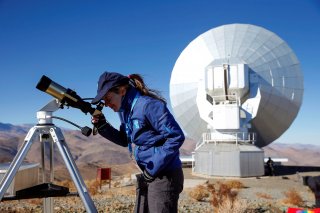COVID-19 Brings Galaxy-Exploring Telescopes Down to Earth
The new coronavirus is not only upending the lives of millions of people on the ground, but it is also wreaking havoc on astronomy and the important telescopes that comb the skies on a nightly basis.
The new coronavirus is not only upending the lives of millions of people on the ground, but it is also wreaking havoc on astronomy and the important telescopes that comb the skies on a nightly basis.
These multimillion-dollar telescopes are needed to eventually answer the universe’s most fundamental questions, including what exactly is dark energy and dark matter. But they, too, along with countless other organizations and businesses that we rely on each day, have closed down.
Several of these groundbreaking telescopes are located in observatories dotted above the coastal Chilean city of La Serena and the country’s dry northern deserts. For the first time since opening several decades ago, these observatories have shuttered their doors, citing the risk of potential COVID-19 infections and spread among visitors and staff.
These particular closures in the South American country are devastating for the global astronomy community, as they will surely postpone meaningful research by international teams that use the information and data generated by the telescopes.
Chile is also home to 70 percent of the world’s investment in astronomy. In recent years, these telescopes have provided direct visual evidence of theories regarding planet and galaxy formations, not to mention the discoveries of exoplanets that could be harboring life.
The Paranal Observatory, which is located about 370 miles north of Santiago, recently closed for the first time in two decades. Not even Chile’s destructive earthquake in 2010 and social protests last year fully closed down its operations. This European-run observatory had been studying planets beyond the sun and black holes located in the Milky Way.
Last year, amid much media frenzy, Chilean astronomers played a significant role in helping to produce the first-ever image of a black hole. The stunning image showed the shadow of the supermassive black hole, 6.5 billion times the mass of our sun, in the center of Messier 87, an elliptical galaxy located about 55 million light-years from Earth.
Imaging the black hole’s shadow involved eight ground-based radio telescopes around the world, operating together as if they were one huge telescope the size of Earth.
In addition to these observatory closures, there have been dozens of astronomy-related conference cancellations. The first to be affected was the American Physical Society, which was scheduled to convene in Denver on March 2. Other conferences have followed, including the Lunar and Planetary Science Conference and the gathering for the American Astronomical Society.
Ethen Kim Lieser is a Tech Editor who has held posts at Google, The Korea Herald, Lincoln Journal Star, AsianWeek and Arirang TV.

